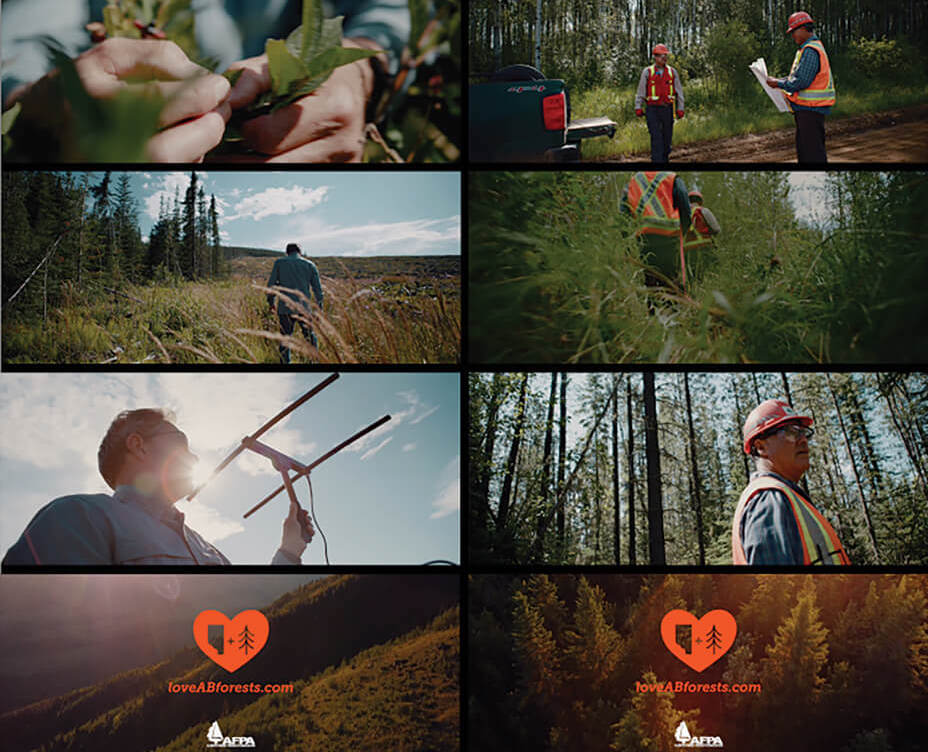Imagine going for a long walk in the woods. Standing next to you is Nathan Fillion. That’s right — The Rookie himself. Castle. Captain Mal.
OK, that’s probably not going to happen. But the next best thing is to take a virtual tour of Alberta’s forests, a Choose Your Own Adventure-ish web application narrated by Fillion, where he soothingly tells you about how nature renews itself, how our trees are managed and, well, to look out for mosquitoes.
In 2021, the Love Alberta Forests site premiered, allowing users to go into the woods while sitting at home, with Fillion riding shotgun.
And it’s a perfect example of how the creative industry is shifting. More and more, it’s about selling ideas. Brands. Concepts. It’s not about where to find the latest shoe sale or where you can get two-for-one bags of potato chips.
“We are a hearts-and-minds firm. We’re more into selling ideas, rather than a product,” says Michael Brechtel, partner of Berlin Advertising and Public Relations, which was commissioned by the Alberta Forest Products Association to create the microsite. “We’re not therapists. We’re not missionaries. We ask our clients about what they want their brand to be.”
In late 2021, Berlin was given a nod for creating one of the world’s top microsites, as judged by Communication Arts magazine. It was a major coup for a firm located far away from London, New York or Los Angeles.
Brechtel says that, after Berlin was awarded the campaign, the creative people knew that they wanted
a Canadian voice narrating the microsite — a voice that was easily recognizable. And, while there were others on the shortlist, Fillion was the clear first choice. “He was a great, interesting person to work with and is the type of personality who can open doors to people’s brains.”
Here’s an Exercise:
Think of the greatest ad you’ve ever seen. Maybe it was in a magazine, or you watched it during the Super Bowl. Maybe it was on a billboard.
Now ask yourself, was it selling you anything directly? Did it tell you that the local dealership had four blue pickups on the lot, with $500 rebates each? Did it tell you stereos were on sale at the mall till the weekend? No.
